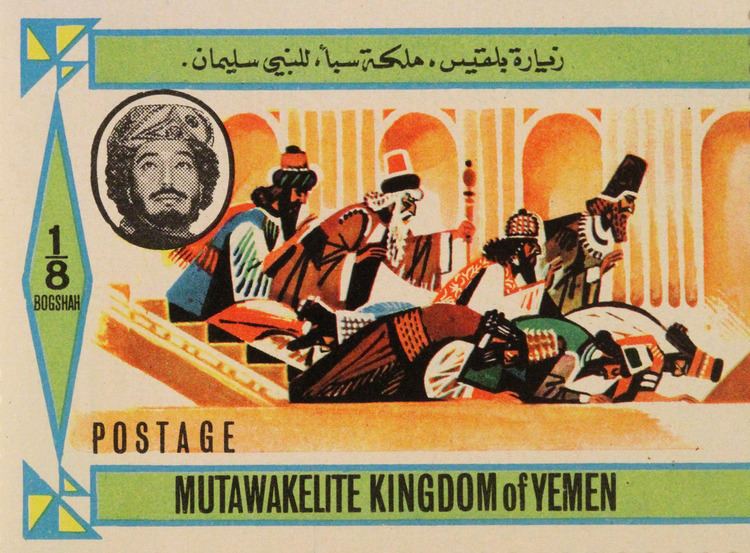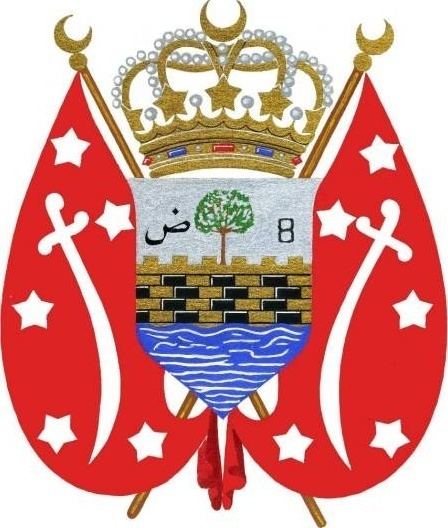Languages Arabic 1948–1962 Ahmad bin Yahya Date dissolved 1962 | Religion Zaidi Islam Founded 1918 | |
 | ||
Capital Sana`a (1918–1948)
Ta'izz (1948–1962) Government Theocratic Absolute monarchy 1918–1948 Imam Yahya Hamid ed-Din | ||
The Hashemite Mutawakkilite Kingdom (Arabic: المملكة المتوكلية الهاشمية al-Mamlakah al-Mutawakkilīyah Al-Hashimiyah), also known as the Kingdom of Yemen or, retrospectively, as North Yemen, was a state that existed between 1918 and 1962 in the northern part of what is now Yemen. Its capital was Sana'a until 1948, then Taiz.

History

Religious leaders of the Zaydi sect of Shia Islam expelled forces of the Ottoman Empire from what is now northern Yemen by the middle of the 17th century but, within a century, the unity of Yemen was fractured due to the difficulty of governing Yemen's mountainous terrain. In 1849, the Ottoman Empire occupied the coastal Tihamah region to put pressure on the Zaiddiyah imam to sign a treaty recognizing Ottoman suzerainty and allowing for a small Ottoman force to be stationed in Sana'a. However, the Ottomans were slow to gain control over Yemen and never managed to eliminate all resistance from local Zaydis. In 1913, shortly before World War I, the Ottoman Empire was forced to cede some power formally to highland Zaydis. On 30 October 1918, following the collapse of the Ottoman Empire, Imam Yahya Muhammad of the al-Qasimi dynasty declared northern Yemen an independent sovereign state. In 1926, Yahya proclaimed the Mutawakkilite Kingdom of Yemen, becoming both a temporal king as well as a (Zaydi) spiritual leader, and won international recognition for his new state, such as with the Kingdom of Italy, entering into the Italo-Yemeni Treaty in 1926.

In the 1920s, Yahya had expanded his power to the north into Tihamah and 'Asir, but he collided with the rising influence of the Saudi king of Nejd and Hejaz, Abdul Aziz ibn Sa'ud. In the early 1930s, Saudi forces retook much of these gains before withdrawing from some of the area, including the southern Tihamah city of Al Hudaydah. The present-day boundary with Saudi Arabia was established by the 20 May 1934 Treaty of Taif, following the Saudi-Yemeni War in 1934. Yahya's non-recognition of his kingdom's southern boundary with the British Aden Protectorate (later the People's Democratic Republic of Yemen) that had been negotiated by his Ottoman predecessors resulted in occasional clashes with the British.

The Kingdom of Yemen became a founding member of the Arab League in 1945 and joined the United Nations on 30 September 1947. It committed a small expeditionary force to the 1948 Arab–Israeli War.

Imam Yahya was assassinated in an unsuccessful coup d'état in 1948, but was eventually succeeded by a firm heir - Yahya's son, Imam Ahmad bin Yahya, who regained power several months later. His reign was marked by growing development, openness and renewed friction with the United Kingdom over the British presence in the south that stood in the way of his aspirations for the creation of Greater Yemen. He was slightly more forward-thinking than his father, and was more open to foreign contacts. Nonetheless, his regime, like his father's, was autocratic and semi-medieval in character; even the most mundane measures required his personal approval.

In March 1955, a coup by a group of officers and two of Ahmad's brothers briefly deposed the king but was quickly suppressed. Ahmad faced growing pressures, supported by the Arab nationalism objectives of President of Egypt, Gamal Abdel Nasser and, in April 1956, he signed a mutual defense pact with Egypt. In 1958, Yemen joined the United Arab Republic (a federation of Egypt and Syria) in a confederation known as the United Arab States, but this confederation was dissolved soon after Syria withdrew from the United Arab Republic and the United Arab States in September 1961, and relations between Egypt and Yemen subsequently deteriorated.
Imam Ahmad died in September 1962, and was succeeded by his son, the Crown Prince Muhammad al-Badr, whose reign was brief. Egyptian-trained military officers inspired by Nasser and led by the commander of the royal guard, Abdullah as-Sallal, deposed him the same year of his coronation, took control of Sana'a, and created the Yemen Arab Republic (YAR). This fighting sparked the North Yemen Civil War, and created a new front in the Arab Cold War, in which Egypt assisted the YAR with troops and supplies to combat forces loyal to the imamate, while the monarchies of Saudi Arabia and Jordan supported Badr's royalist forces opposing the newly formed republic. Conflict continued periodically until 1967 when Egyptian troops were withdrawn. By 1968, following a final royalist siege of Sana'a, most of the opposing leaders reached a reconciliation, and Saudi Arabia recognized the republic in 1970.
